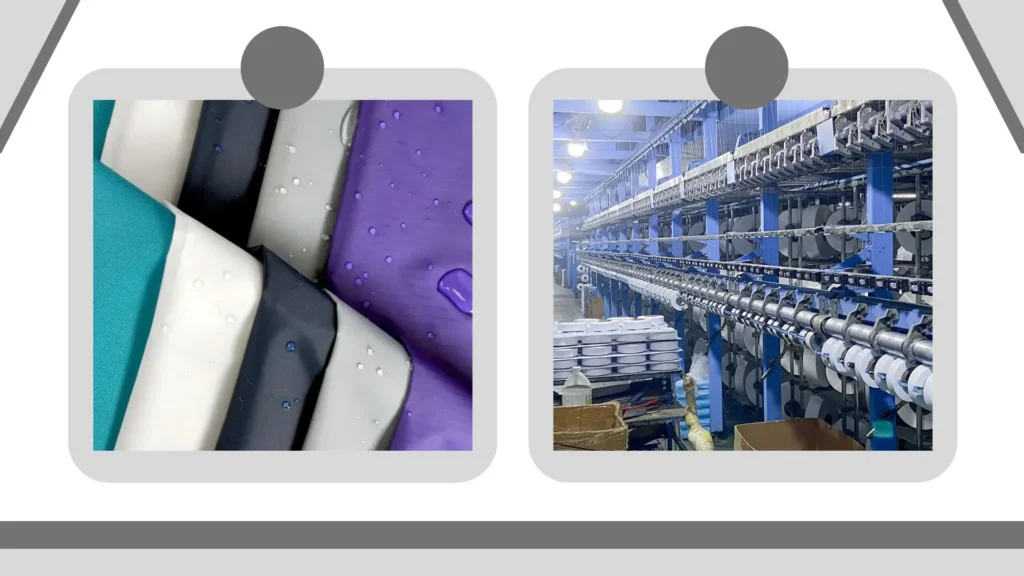What Techniques Do Manufacturers Use to Detect Defects in Nylon 6?
Nylon 6 is widely used in textiles, automotive components, and industrial products.
In the textile industry, it is found in clothing, carpets, and upholstery, valued for its durability and resilience.
The automotive sector utilizes Nylon 6 for parts such as fuel lines, connectors, and gears, where strength and flexibility are crucial.
Additionally, it is employed in various industrial applications, including conveyor belts and machine parts, highlighting its versatility.
Quality control in Nylon 6 manufacturing is critical for ensuring that products meet established standards.
Defects in the material can lead to decreased performance, safety issues, and customer dissatisfaction.
By implementing effective defect detection techniques, manufacturers can identify and rectify issues early in the production process, ultimately enhancing the overall quality and reliability of their products.
What Are Common Defects Found in Nylon 6?
Overview of Defects
Manufacturing defects can significantly impact the quality and performance of Nylon 6 products.
These defects may arise from various factors during production, including material inconsistencies, processing errors, and environmental influences.
Understanding the types of defects is essential for manufacturers to implement effective detection methods.

Types of Defects
Common defects in Nylon 6 include discoloration, which may result from thermal degradation or contamination; mechanical weaknesses, such as brittleness or reduced tensile strength; and surface imperfections, including uneven texture or foreign particles.
Each of these defects can compromise the material’s integrity and its ability to perform as intended.
Implications of Defects
Defects not only affect the aesthetic appeal of Nylon 6 products but can also have serious implications for their functionality.
For instance, a component that is brittle may fail under stress, leading to potential safety hazards.
Early detection and correction of these defects are vital for maintaining high-quality standards and ensuring customer satisfaction.
Also Read:
How Do Nylon 6 Manufacturers Control Defects
What are Common Defects in Nylon 6 Manufacturing
How Do Visual Inspections Help in Defect Detection?
Importance of Visual Inspections
Visual inspections are often the first step in identifying defects in Nylon 6 products.
Trained personnel can quickly assess the surface quality and detect visible faults, making this method a valuable part of the quality control process.
What to Look For
During visual inspections, inspectors look for signs of discoloration, surface irregularities, and contamination.
They examine the overall appearance of the material and check for any deviations from established quality standards.
This immediate assessment can provide critical insights into potential quality issues that may need further investigation.
Limitations of Visual Inspections
While visual inspections are effective for identifying surface defects, they may not detect internal flaws or those that are not easily visible.
For example, mechanical weaknesses may not be apparent on the surface but can significantly affect product performance.
Therefore, visual inspections should be complemented with other testing methods to ensure comprehensive quality assurance.
What Role Does Mechanical Testing Play?
Definition of Mechanical Testing
Mechanical testing involves evaluating the physical properties of Nylon 6 to ensure it meets specific performance criteria.
This testing is crucial for understanding how the material will behave under various conditions and stressors.

Techniques Used in Mechanical Testing
Common mechanical testing techniques include tensile tests, which measure the material’s ability to withstand pulling forces; flexural tests, which assess its performance under bending; and hardness tests, which evaluate resistance to indentation.
These methods provide valuable data on the mechanical properties of Nylon 6, helping manufacturers identify any weaknesses.
Importance of Mechanical Testing
Mechanical testing is essential for ensuring that Nylon 6 products meet industry standards and perform as required.
By quantifying the material’s performance characteristics, manufacturers can make informed decisions about material suitability for specific applications, ultimately enhancing the reliability of their products.
How Do Non-Destructive Testing Methods Work?
Overview of Non-Destructive Testing (NDT)
Non-destructive testing allows manufacturers to evaluate the integrity of Nylon 6 products without causing any damage.
This approach is particularly beneficial for identifying internal defects that may not be detectable through visual inspections alone.
Common NDT Techniques
Techniques such as ultrasonic testing, which uses sound waves to detect internal flaws; X-ray imaging, which provides a visual representation of the internal structure; and dye penetrant testing, which reveals surface cracks, are commonly employed.
Each method offers unique advantages, allowing manufacturers to tailor their defect detection strategies to specific needs.
Benefits of Non-Destructive Testing
NDT methods enable manufacturers to thoroughly assess products while preserving their usability.
By identifying defects early in the production process, manufacturers can reduce waste and ensure that only high-quality products reach the market, contributing to overall efficiency and cost savings.
What Is the Role of Chemical Analysis?
Importance of Chemical Analysis
Chemical analysis involves examining the composition of Nylon 6 to verify that it meets specified standards.
This technique can help identify contaminants that may affect the quality and performance of the material.

Techniques Used in Chemical Analysis
Common methods of chemical analysis include Fourier-transform infrared spectroscopy (FTIR), which identifies chemical bonds and functional groups, and gas chromatography, which separates and analyzes compounds in the material.
These techniques are crucial for detecting impurities and ensuring that the material composition aligns with industry specifications.
Impact on Quality Assurance
Chemical analysis plays a vital role in maintaining Nylon 6 quality by ensuring that both raw materials and final products are free from harmful contaminants.
By verifying the chemical composition, manufacturers can enhance product reliability and ensure compliance with safety regulations.
How Do Automated Inspection Systems Enhance Detection?
Overview of Automated Systems
Automated inspection systems leverage advanced technology to detect defects in Nylon 6 products.
These systems can significantly increase efficiency and accuracy in quality control processes.
Technologies Used in Automation
Technologies such as machine vision, which uses cameras and image processing algorithms to analyze products in real-time, and artificial intelligence, which can learn and adapt to detect defects, are commonly employed.
These technologies enhance the precision of defect detection and reduce the likelihood of human error.
Advantages of Automation
The implementation of automated inspection systems allows for more consistent and reliable defect detection compared to manual methods.
This not only improves overall production efficiency but also helps maintain high-quality standards, ensuring that manufacturers can meet customer expectations.
How Do Statistical Process Control (SPC) Techniques Help?
Definition of SPC
Statistical Process Control (SPC) involves using statistical methods to monitor and control manufacturing processes.
This technique helps identify variations that could lead to defects and enables manufacturers to take corrective actions before issues escalate.

Key SPC Techniques
Common SPC techniques include control charts, which track process variations over time, and process capability analysis, which assesses how well a process meets specifications.
These methods allow manufacturers to visualize trends and identify areas for improvement.
Importance of SPC in Defect Prevention
By implementing SPC techniques, manufacturers can proactively address potential quality issues, reducing the likelihood of defects.
This approach fosters a culture of continuous improvement and helps ensure that products consistently meet high-quality standards.
Conclusion
Detecting defects in Nylon 6 is essential for maintaining product quality and customer satisfaction.
By employing a combination of visual inspections, mechanical testing, non-destructive testing, chemical analysis, automated systems, and statistical process control, manufacturers can effectively identify and address defects.
This multi-faceted approach not only enhances the reliability of Nylon 6 products but also supports overall operational efficiency and success in the market.



